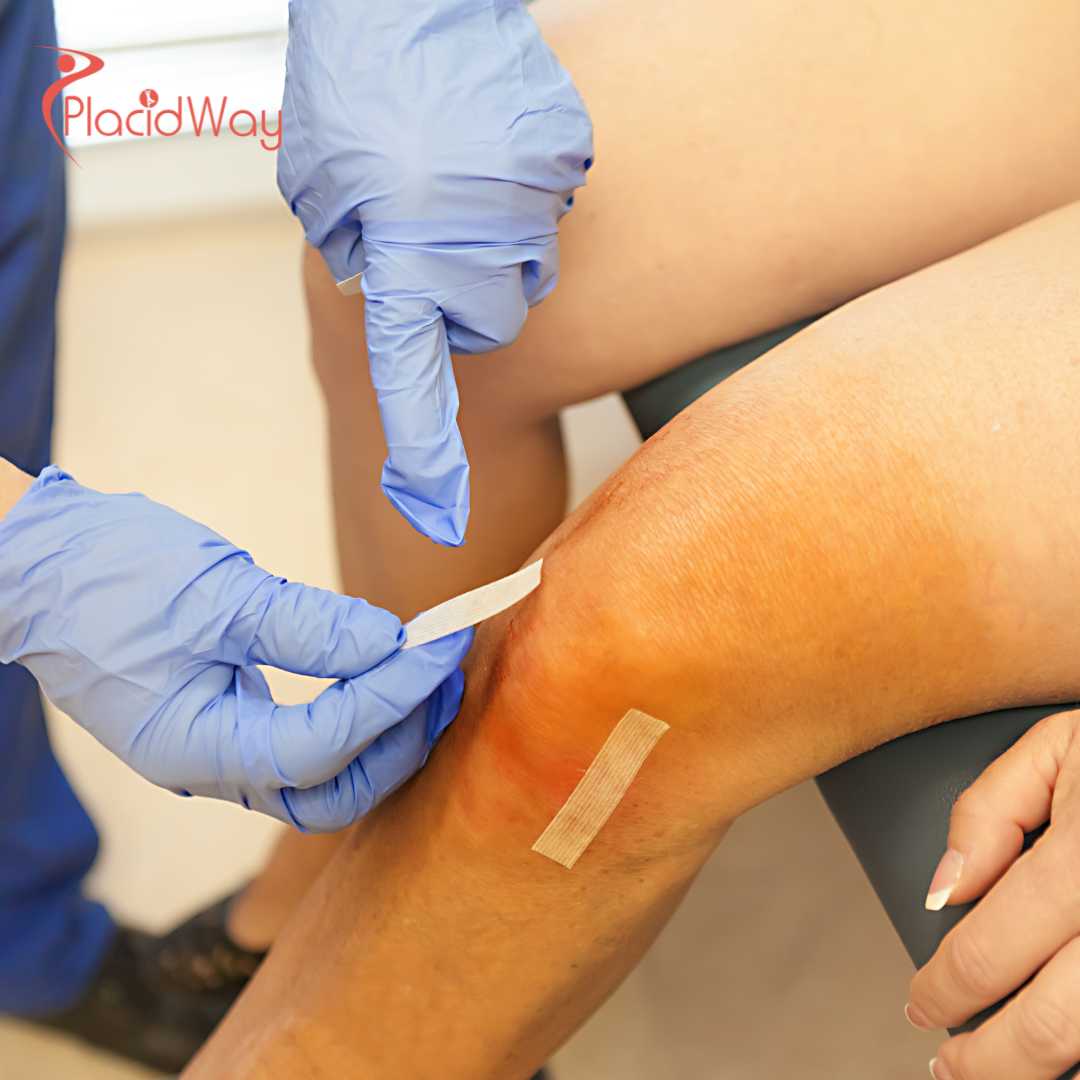.png)
Reclaim Your Health: Understanding Vascular Stenting for Blocked Arteries
Are you experiencing persistent leg pain when walking, unexplained dizziness, or worries about a history of heart issues? These could be signs of narrowed or blocked arteries, a condition that can significantly impact your quality of life and overall health. If you've been searching for "blocked artery treatment options," "leg pain from PAD solutions," or "carotid artery stenosis treatment," you're likely looking for effective ways to restore vital blood flow.
Vascular stenting is a modern, often life-changing medical procedure designed to address these arterial blockages. It's a minimally invasive technique that uses a small, expandable mesh tube – a stent – to prop open a narrowed artery, allowing blood to flow freely again. This procedure is a beacon of hope for individuals suffering from conditions like Peripheral Artery Disease (PAD), Carotid Artery Disease (leading to stroke risk), and Renal Artery Stenosis (affecting kidney function and blood pressure).
Understanding vascular stenting means understanding its profound impact: alleviating symptoms, preventing serious health complications, and significantly improving your daily life. For many, considering this procedure, especially in the context of medical tourism, opens up opportunities for high-quality care at potentially more affordable prices, without compromising on expertise.
What are the warning signs that might indicate you need a vascular stent?
Recognizing the symptoms of arterial blockages is the first crucial step towards seeking treatment. These signs can often be subtle at first but tend to worsen over time. The specific symptoms depend on which arteries are affected:
- Peripheral Artery Disease (PAD): The most common symptom is claudication – muscle pain or cramping in your legs or arms that starts during exercise and goes away with rest. Other signs include numbness or weakness in the legs, coldness in the lower leg or foot, sores on toes, feet, or legs that won't heal, a change in leg color, hair loss on legs, and shiny skin. Patients often search for "why do my legs hurt when I walk" or "signs of blocked arteries in legs."
- Carotid Artery Disease: This affects arteries supplying blood to the brain. Symptoms often manifest as Transient Ischemic Attacks (TIAs), also known as "mini-strokes." These can include sudden weakness or numbness on one side of your body, difficulty speaking or understanding speech, sudden blurred or decreased vision in one eye (amaurosis fugax), and dizziness or loss of balance. These are critical warning signs for potential stroke.
- Renal Artery Stenosis: Affecting the arteries to the kidneys, this condition often causes high blood pressure that is difficult to control with medication, or kidney dysfunction. You might not have specific symptoms until the condition is advanced, making regular check-ups important, especially if you have risk factors.
If you experience any of these symptoms, especially if they are worsening, it’s vital to consult a doctor. Early diagnosis and treatment can prevent more severe complications.
What are the primary causes and risk factors for arterial blockages requiring stenting?
The vast majority of arterial blockages are caused by a condition called atherosclerosis. This is a progressive disease where plaque – a sticky substance made of cholesterol, fat, calcium, and other substances – builds up inside your arteries. Over time, this plaque hardens and narrows the arteries, restricting blood flow.
Several risk factors accelerate the development and progression of atherosclerosis:
- Smoking: Nicotine and other chemicals in tobacco damage artery walls, making them more susceptible to plaque buildup. It’s one of the most significant risk factors for PAD and other arterial diseases.
- High Cholesterol: High levels of LDL (bad) cholesterol contribute directly to plaque formation.
- High Blood Pressure (Hypertension): Uncontrolled high blood pressure can damage artery walls, speeding up atherosclerosis.
- Diabetes: High blood sugar levels can damage blood vessels throughout the body, making individuals with diabetes much more prone to arterial blockages.
- Obesity: Being overweight often correlates with other risk factors like high blood pressure, high cholesterol, and diabetes.
- Lack of Physical Activity: A sedentary lifestyle contributes to obesity and other risk factors.
- Age: The risk of atherosclerosis increases with age.
- Family History: If you have a family history of early heart disease or stroke, your risk may be higher.
Understanding these causes and risk factors is crucial for prevention and for managing the disease once it’s diagnosed. Many patients search for "how to prevent blocked arteries" or "what causes PAD."
What types of vascular stenting procedures are available?
Vascular stenting is a versatile procedure, adapted to treat blockages in various parts of the body. The general process typically involves an angioplasty first, where a balloon-tipped catheter is inserted into the narrowed artery and inflated to open it. Then, a stent is placed to keep the artery open.
Key types of vascular stenting include:
- Peripheral Artery Stenting: This procedure targets blockages in the arteries of the legs, arms, or abdomen, commonly associated with Peripheral Artery Disease (PAD). It helps improve blood flow to the limbs, reducing pain and preventing tissue damage. Many patients seek "stent for leg artery blockage."
- Carotid Artery Stenting: Performed on the carotid arteries in the neck, this stenting aims to prevent stroke by opening narrowed arteries that supply blood to the brain. It's an alternative to carotid endarterectomy for suitable candidates. This is a common search for "carotid artery stent procedure."
- Renal Artery Stenting: This involves placing a stent in the renal arteries that supply blood to the kidneys. It's often used to treat renal artery stenosis, which can cause severe high blood pressure and kidney dysfunction.
- Other Vascular Stenting: Stents can also be used in other arteries, such as those supplying the intestines (mesenteric arteries) or subclavian arteries.
Stents themselves can be bare-metal or drug-eluting. Drug-eluting stents are coated with medication that is slowly released to help prevent the artery from narrowing again (restenosis). Your doctor will determine the most appropriate type of stent for your specific condition.
Who is an ideal candidate for vascular stenting?
Determining eligibility for vascular stenting involves a thorough evaluation by a vascular specialist. Generally, you might be an ideal candidate if:
- You have symptomatic arterial disease: This means your arterial blockages are causing significant symptoms that impact your daily life, such as severe claudication, critical limb ischemia (non-healing wounds, rest pain), or TIA symptoms indicating a high risk of stroke. Patients often ask, "when is a stent necessary for blocked arteries?"
- Conservative treatments have failed: You've tried lifestyle modifications (e.g., quitting smoking, exercise, diet changes) and medications, but your symptoms persist or worsen.
- The blockage is amenable to stenting: The location, length, and degree of calcification of your arterial blockage are suitable for successful stent placement. Some complex or very long blockages might require surgical bypass instead.
- You are in reasonable overall health: While it's a minimally invasive procedure, candidates should be healthy enough to undergo the procedure and tolerate associated medications (like antiplatelet drugs). Conditions like severe kidney disease, uncontrolled bleeding disorders, or severe heart failure might be contraindications.
- You understand and accept the risks: Patients should be fully informed about the potential benefits and risks of the procedure.
Your doctor will conduct various diagnostic tests, including ultrasounds, CT angiograms, or MR angiograms, to assess the severity and location of the blockages and determine if stenting is the best course of action for you.
What can you expect during the recovery period after vascular stenting?
Recovery after vascular stenting is generally quicker than open surgical procedures due to its minimally invasive nature. Here's what you can typically expect:
- Immediate Post-Procedure: You'll likely spend a few hours in a recovery room, where nurses will monitor your vital signs and the incision site (usually in the groin or arm). You'll need to lie flat for several hours to prevent bleeding at the access site.
- Hospital Stay: Most patients are discharged within 1-2 days. For carotid stenting, a slightly longer observation period might be necessary.
- Pain and Discomfort: You may experience mild pain, bruising, or tenderness at the incision site. Over-the-counter pain relievers usually suffice.
- Activity Restrictions: For about 1-2 weeks, you'll be advised to avoid strenuous activities, heavy lifting, and prolonged standing or walking. Gradually increasing activity is encouraged. You might be cleared to return to light work within a few days to a week.
- Medication: You will almost certainly be prescribed antiplatelet medications (like aspirin and clopidogrel) for an extended period, potentially for life, to prevent blood clots from forming on the stent and re-blocking the artery. Adherence to this medication regimen is crucial for the long-term success of the stent.
- Follow-up: Regular follow-up appointments with your doctor will be scheduled to monitor your recovery and the stent's patency, often involving ultrasound scans.
Many patients wonder "how long is recovery after a vascular stent" or "life after vascular stenting." While individual recovery varies, most can resume normal daily activities within a month, with significant symptom improvement often noted shortly after the procedure.
What are the potential risks and side effects of vascular stenting?
Vascular stenting is considered a safe and effective procedure, but like all medical interventions, it carries potential risks. Your medical team will discuss these with you in detail, weighing them against the benefits of the procedure.
Common, generally minor risks include:
- Bleeding or Bruising: At the catheter insertion site (usually the groin). This is typically minor but can sometimes require intervention.
- Infection: At the incision site, which is rare but can occur.
- Allergic Reaction: To the contrast dye used during the procedure or to medications.
More serious, but less common, risks include:
- Restenosis: The artery narrowing again within the stent, requiring further intervention. This is a primary concern and why antiplatelet medication is crucial. Patients often search for "how long does a vascular stent last."
- Blood Clot Formation: A clot forming inside the stent or at the procedure site, potentially blocking blood flow.
- Artery Damage: The catheter or balloon can sometimes damage the artery wall during the procedure.
- Kidney Problems: The contrast dye used during imaging can sometimes affect kidney function, especially in individuals with pre-existing kidney disease.
- Stroke (especially with Carotid Stenting): Although the procedure aims to prevent stroke, there's a small risk of dislodging plaque during the procedure, leading to a stroke.
- Heart Attack: A very rare complication.
Your doctors take precautions to minimize these risks. Choosing an experienced surgeon and a reputable facility significantly reduces the likelihood of complications.
How does the cost of vascular stenting vary globally?
One of the driving factors for medical tourism is the significant disparity in healthcare costs around the globe. Vascular stenting, like many advanced medical procedures, can be substantially more affordable in certain countries without compromising on quality. Factors influencing cost include the country's healthcare system, the reputation of the hospital and surgeon, the type of stent used (e.g., drug-eluting vs. bare-metal), and the length of hospital stay.
Here's an estimated cost comparison for vascular stenting (typically for one vessel, excluding extensive complications or multiple stents):
| Country | Estimated Cost Range (USD) | Key Advantages for Medical Tourists |
|---|---|---|
| USA | $20,000 - $60,000+ | Advanced technology, leading specialists, high regulatory standards. High cost often due to insurance systems and administrative overhead. |
| Western Europe (e.g., UK, Germany) | $15,000 - $40,000+ | High quality, well-regulated healthcare, advanced technology. Costs can still be prohibitive for those without comprehensive insurance. |
| India | $5,000 - $12,000 | World-class hospitals, highly skilled English-speaking doctors, significant cost savings, excellent infrastructure for medical tourists. |
| Mexico | $6,000 - $15,000 | Proximity for US patients, accredited facilities, experienced specialists, cultural familiarity for many, often combined with a vacation. |
| Turkey | $7,000 - $18,000 | Modern hospitals, JCI accreditation common, competitive pricing, strategic location bridging Europe and Asia, strong hospitality sector. |
| Thailand | $8,000 - $18,000 | Renowned for medical tourism, luxurious private hospitals, highly trained staff, excellent patient care, and opportunity for post-procedure recovery in a serene environment. |
Note: These are estimated ranges and can vary based on specific circumstances, hospital, surgeon, and currency fluctuations. Always request a personalized quote.
For those searching "affordable vascular stent surgery" or "cost of vascular stent abroad," these figures highlight why medical tourism is a compelling option.
Why should I consider having vascular stenting performed abroad?
The decision to travel abroad for medical care, especially for a procedure like vascular stenting, is deeply personal. However, several compelling reasons draw patients to international healthcare destinations:
- Significant Cost Savings: As seen in the table above, the cost for vascular stenting can be a fraction of what it is in countries like the US or UK, even when factoring in travel and accommodation. This is often the primary motivator for patients without adequate insurance or those facing high deductibles.
- Reduced Waiting Times: In many countries with public healthcare systems, patients may face long waiting lists for specialist consultations and procedures. Traveling abroad often means immediate access to care, which can be critical for conditions like symptomatic arterial blockages.
- Access to Advanced Technology and Expertise: Many international hospitals are equipped with state-of-the-art technology and employ highly skilled, internationally trained specialists. They often perform a high volume of specific procedures, leading to greater experience.
- Privacy and Anonymity: For some, undergoing a medical procedure away from their home country offers a greater sense of privacy.
- Opportunity for a "Medical Vacation": Combining treatment with a recovery period in a new, often picturesque location can contribute to a more positive overall experience and faster psychological recovery.
For those searching "medical tourism for vascular stent" or "benefits of overseas medical treatment," these advantages highlight the growing appeal of international care.
What should I expect when traveling for vascular stenting abroad?
Embarking on a medical journey abroad requires careful planning and preparation. Here's a general outline of what to expect:
- Initial Consultation and Research: Start by researching potential destinations and hospitals known for vascular procedures. Many medical tourism facilitators, like PlacidWay, can help connect you with reputable clinics and specialists. You'll typically share your medical records for a remote consultation and treatment plan.
- Logistics Planning: This includes arranging flights, accommodation (often near the hospital for convenience), and local transportation. Many medical tourism packages include these arrangements.
- Visa and Documentation: Check visa requirements for your chosen destination. Ensure all your medical documents are organized and translated if necessary.
- Pre-Procedure: Upon arrival, you'll have in-person consultations with your surgeon, undergo pre-operative tests, and receive detailed information about the procedure.
- The Procedure and Hospital Stay: As discussed, this typically involves a short hospital stay for the stenting procedure.
- Post-Procedure Recovery: You'll need to remain in the country for a recommended recovery period (often 1-3 weeks, depending on the procedure and individual recovery). This allows for initial follow-up appointments and ensures you're stable enough to travel back home.
- Follow-up Care Back Home: Discuss with your treating physician abroad what kind of follow-up care is needed once you return home and how your local doctor can coordinate with your international care team.
Using a medical tourism facilitator can greatly simplify this process, handling many of the logistical challenges and providing support throughout your journey.
How can I ensure safety and quality when choosing a clinic for vascular stenting abroad?
Ensuring safety and high-quality care is paramount when seeking medical treatment abroad. While many international clinics offer excellent standards, due diligence is key:
- International Accreditations: Look for hospitals with international accreditations such as Joint Commission International (JCI). This signifies that the facility meets rigorous international standards for patient safety and quality of care.
- Surgeon Credentials and Experience: Research the surgeon's qualifications, experience, and specialization in vascular procedures. Many top surgeons in medical tourism destinations have trained in Western countries and hold international certifications.
- Technology and Facilities: Ensure the hospital uses modern equipment and has advanced facilities, comparable to what you would expect at home. Ask about the types of stents used and their track record.
- Patient Testimonials and Reviews: Seek out genuine patient reviews and success stories. While not a sole indicator, they can provide valuable insights into patient experience and outcomes.
- Transparent Pricing and Packages: A reputable clinic or facilitator will offer clear, upfront pricing with no hidden fees. Understand what the package includes (e.g., hospital stay, surgeon fees, consultations, medications).
- Communication and Language Support: Ensure there will be no language barrier. Many international hospitals cater specifically to medical tourists and have English-speaking staff or dedicated interpreters.
- Medical Tourism Facilitators: Partnering with a trusted facilitator like PlacidWay is one of the best ways to ensure safety and quality. They pre-vet clinics, provide comprehensive information, and assist with all aspects of your medical journey, acting as an advocate for your best interests.
Asking detailed questions and not settling until you feel fully confident in your choice is essential for a safe and successful outcome. Those searching for "safe medical tourism clinics" or "best hospitals for stents overseas" should prioritize these factors.
What are patient success stories from abroad after vascular stenting?
Patient success stories are powerful testimonials to the effectiveness of vascular stenting abroad. While specific individual stories vary, common themes emerge:
- Return to Active Life: Many patients suffering from severe claudication due to PAD report a dramatic reduction or complete elimination of leg pain after stenting. They can walk longer distances, resume hobbies, and enjoy a quality of life they thought was lost. Imagine being able to enjoy long walks again without debilitating pain, as one patient shared after their procedure in Thailand.
- Stroke Prevention and Peace of Mind: Patients who underwent carotid stenting due to a high risk of stroke often express immense relief and peace of mind. One patient from Canada, facing a long waitlist, found swift and excellent care in Turkey, effectively mitigating their stroke risk and allowing them to live without constant anxiety.
- Improved Blood Pressure and Kidney Function: Individuals with renal artery stenosis often see a significant improvement in their blood pressure control, sometimes even reducing their need for medication. Others experience stabilization or improvement in kidney function.
- High-Quality Care at a Fraction of the Cost: Beyond the medical outcomes, patients frequently highlight their satisfaction with the overall experience – the professionalism of the medical staff, the modern facilities, and the compassionate care, all delivered at a price point that made the procedure accessible. A patient from the US, for instance, saved over 70% on their PAD stenting in India compared to domestic options, without feeling any compromise on care.
- Positive "Medical Vacation" Experience: The ability to recover in a pleasant environment, often with supportive family, adds to the positive experience. The blend of world-class medical treatment and cultural immersion often leaves patients with not just improved health, but also positive memories of their journey.
These stories underscore that quality care for vascular stenting is not confined to one region and that medical tourism offers a viable, often superior, path to health and well-being for many.
Take the Next Step with PlacidWay
Ready to explore treatment options abroad? Discover top clinics, compare prices, and get a free quote tailored to your needs with PlacidWay.
Vascular Surgery Abroad | Best Vascular Treatment Center










Share this listing